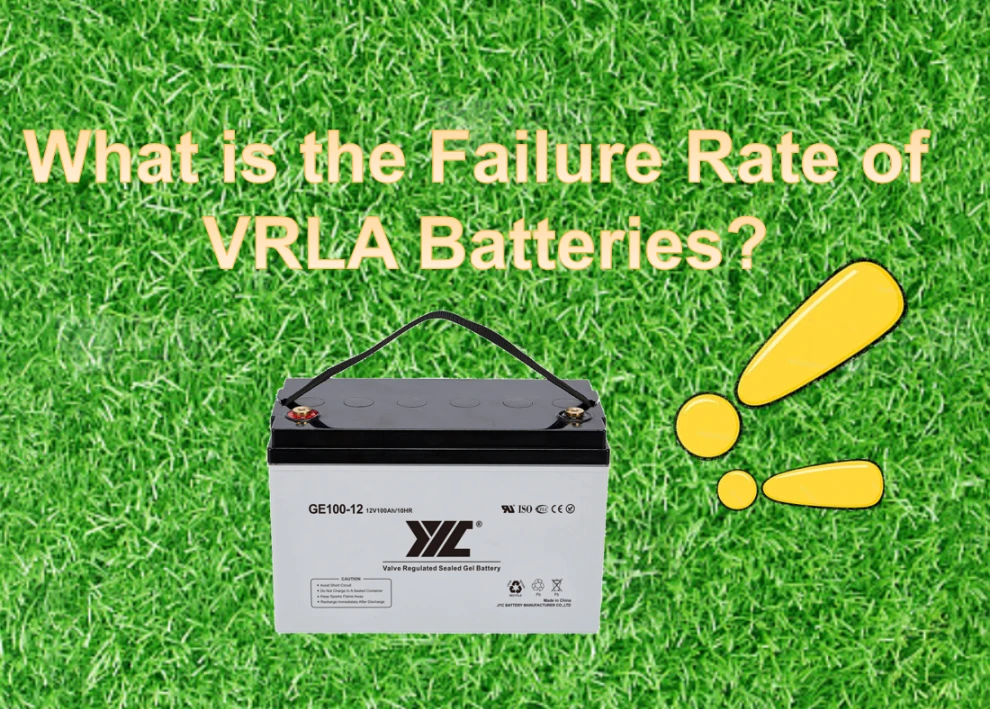
Introduction
Valve-Regulated Lead Acid Batteries (VRLA) operate in a far more diverse set of applications thanks to their maintenance-free mode and high energy density. Nevertheless, users often inquire about the failure rate and the factors impacting it. In this article, we tend to delve into VRLA battery failure rate and some crucial aspects that have an effect on their performance.
Understanding Failure Rate
The failure rate of VRLA batteries is the probability that the batteries will not work as designed over a given period. It is usually expressed in terms of percentage or some number of failures per unit of time. Understanding this failure rate is important for users as it helps to predict when a battery replacement or maintenance might be required.
Factors Affecting Failure Rate
Several factors contribute to the failure rate of VRLA batteries. These factors may vary in their impact and severity:
1. Operating Temperature
Temperature is also of key importance in the lifespan of VRLA batteries. High temperatures accelerate chemical reactions in the battery, thus accelerating degradation and failure rates. On a different note, extremely low temperatures degrade the performance of a battery during charging and discharging cycles.
2. Overcharging and Undercharging
Overcharging or undercharging a VRLA battery can seriously damage its health and increase the risk of premature failure. Overcharging leads to excessive gassing, causing internal structure damage to the battery, whereas undercharging causes sulfation that reduces the capacity and efficiency of the battery.
3. Depth of Discharge
The DoD affects the lifespan of a battery, with refers to the amount of capacity used before recharging the battery. A strained battery will thus have a short life, whereas shallow discharges are less taxing and therefore prolong its longevity.
4. Quality and Manufacturing
The quality of the VRLA battery and its manufacturing process can heavily influence its failure rate. Batteries made with subpar materials or inadequate quality control are more likely to fail prematurely.
How to Reduce Failure Rates
Although it is not possible to rid all the risks of battery failure, but one can minimize VRLA’s failure ratio by taking certain steps:
1. Optimal Operating Conditions
Maintain the batteries within the manufacturer’s recommended operating temperature range to minimize the risk of accelerated aging. Regularly monitor the temperature and ensure the battery remains in a controlled environment.
2. Charging Control
Implement a reliable charging system to prevent overcharging or undercharging. This can be done through smart charge controllers or battery management systems. Our batteries are equipped with these features, so that you can buy batteries from us.
3. Depth of Discharge Management (DoD)
Limit the depth of discharge within normal use so that excessive stress is not put on the battery. Apply energy-efficient practices to optimize battery use.
4. Quality Assurance
When looking for VRLA batteries, look for manufacturers with a good reputation. Focus on those which comply with industry standards and certifications. We, JYC, are a reliable manufacturer of VRLA batteries, and all our batteries are produced according to industry standards. We even have earned a lot of certifications.
In a nutshell, users can effectively minimize the chances of early battery failures and guarantee optimal performance throughout the battery’s lifespan by implementing appropriate usage and maintenance practices.



